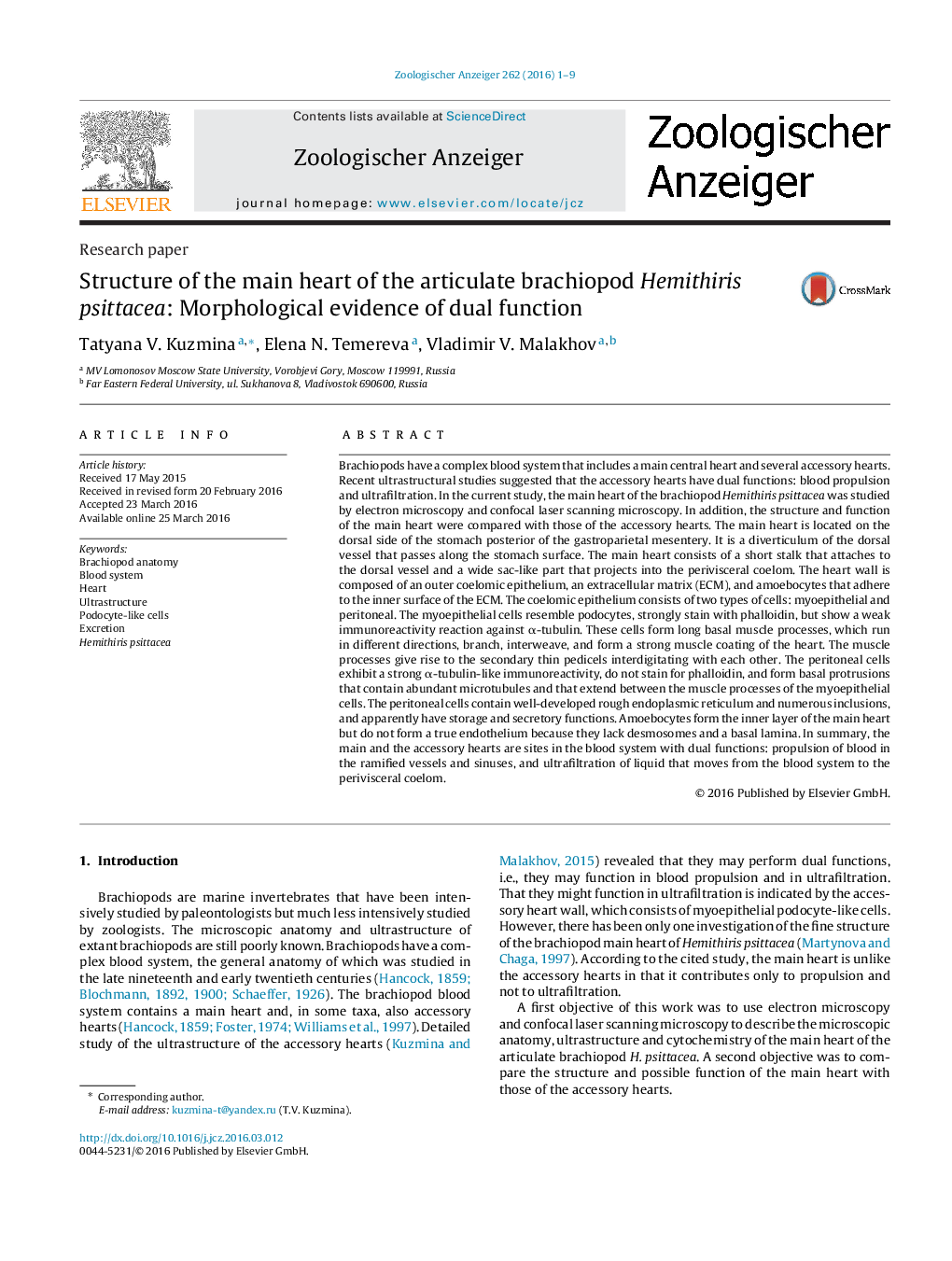| کد مقاله | کد نشریه | سال انتشار | مقاله انگلیسی | نسخه تمام متن |
|---|---|---|---|---|
| 2790463 | 1568613 | 2016 | 9 صفحه PDF | دانلود رایگان |

Brachiopods have a complex blood system that includes a main central heart and several accessory hearts. Recent ultrastructural studies suggested that the accessory hearts have dual functions: blood propulsion and ultrafiltration. In the current study, the main heart of the brachiopod Hemithiris psittacea was studied by electron microscopy and confocal laser scanning microscopy. In addition, the structure and function of the main heart were compared with those of the accessory hearts. The main heart is located on the dorsal side of the stomach posterior of the gastroparietal mesentery. It is a diverticulum of the dorsal vessel that passes along the stomach surface. The main heart consists of a short stalk that attaches to the dorsal vessel and a wide sac-like part that projects into the perivisceral coelom. The heart wall is composed of an outer coelomic epithelium, an extracellular matrix (ECM), and amoebocytes that adhere to the inner surface of the ECM. The coelomic epithelium consists of two types of cells: myoepithelial and peritoneal. The myoepithelial cells resemble podocytes, strongly stain with phalloidin, but show a weak immunoreactivity reaction against α-tubulin. These cells form long basal muscle processes, which run in different directions, branch, interweave, and form a strong muscle coating of the heart. The muscle processes give rise to the secondary thin pedicels interdigitating with each other. The peritoneal cells exhibit a strong α-tubulin-like immunoreactivity, do not stain for phalloidin, and form basal protrusions that contain abundant microtubules and that extend between the muscle processes of the myoepithelial cells. The peritoneal cells contain well-developed rough endoplasmic reticulum and numerous inclusions, and apparently have storage and secretory functions. Amoebocytes form the inner layer of the main heart but do not form a true endothelium because they lack desmosomes and a basal lamina. In summary, the main and the accessory hearts are sites in the blood system with dual functions: propulsion of blood in the ramified vessels and sinuses, and ultrafiltration of liquid that moves from the blood system to the perivisceral coelom.
Journal: Zoologischer Anzeiger - A Journal of Comparative Zoology - Volume 262, May 2016, Pages 1–9